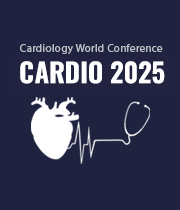Title : Management of severe mitral regurgitation and giant left atrium (17.1 cm) via minimally invasive mitral valve replacement: A case-based discussion
Abstract:
Giant left atrium (GLA) is a rare but severe manifestation of chronic mitral valve disease and is strongly associated with complications such as atrial fibrillation, thromboembolism, and progressive heart failure. We present the case of a 50-year-old male with decompensated heart failure and long-standing mitral regurgitation who was found to have a massively enlarged left atrium measuring 17.1 cm in anteroposterior diameter—among the largest reported in the literature.
The patient presented in New York Heart Association (NYHA) Class IV with progressive dyspnoea, palpitations, and peripheral oedema. Clinical examination revealed a loud holosystolic murmur and signs of volume overload. ECG confirmed atrial fibrillation with right axis deviation, and chest X-ray showed marked cardiomegaly with carinal splaying. Transesophageal echocardiography revealed severe mitral regurgitation with posterior leaflet restriction, preserved left ventricular systolic function, and an enormously dilated left atrium distorting adjacent cardiac structures. Coronary angiography ruled out concomitant ischaemic disease.
Due to his previous refusal of sternotomy, a multidisciplinary team recommended a minimally invasive mitral valve replacement (MIMVR). The patient underwent successful MIMVR via a 5-cm right thoracotomy with peripheral cannulation. Intraoperative challenges included displaced great vessels and obscured mitral anatomy due to extreme atrial dilation. Despite this, a 33-mm bioprosthetic valve was implanted successfully, and intraoperative echocardiography confirmed excellent valve function.
From a cardiology perspective, this case highlights the importance of individualized decision-making in severe mitral valve disease with advanced remodelling. Although sternotomy remains standard for complex anatomical cases, the increasing feasibility of minimally invasive techniques offers patients with contraindications or reluctance toward conventional surgery a safe and effective alternative. The patient had an uneventful recovery, was discharged on postoperative day 4, and showed significant improvement in functional status at follow-up.



